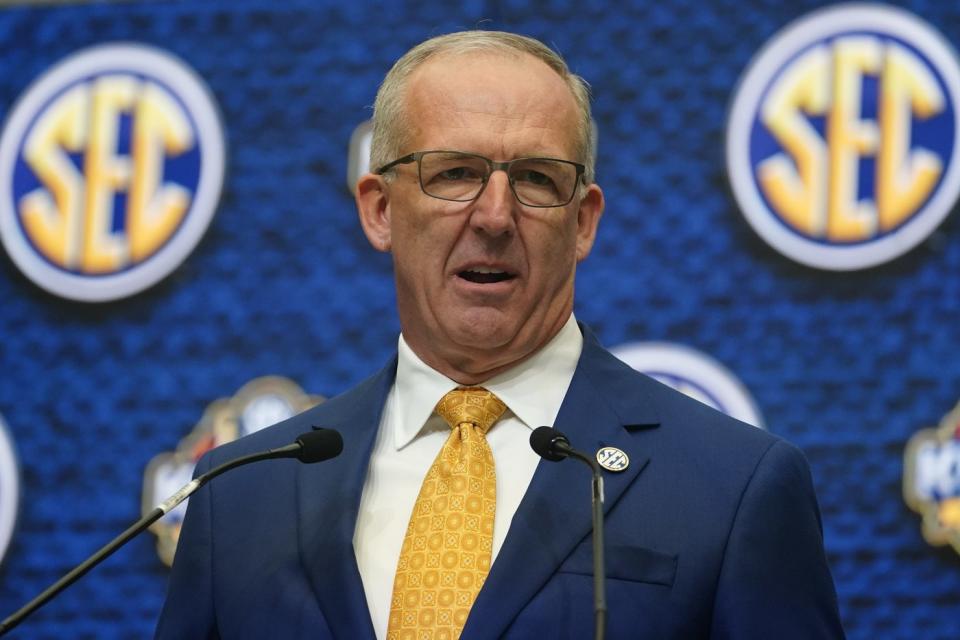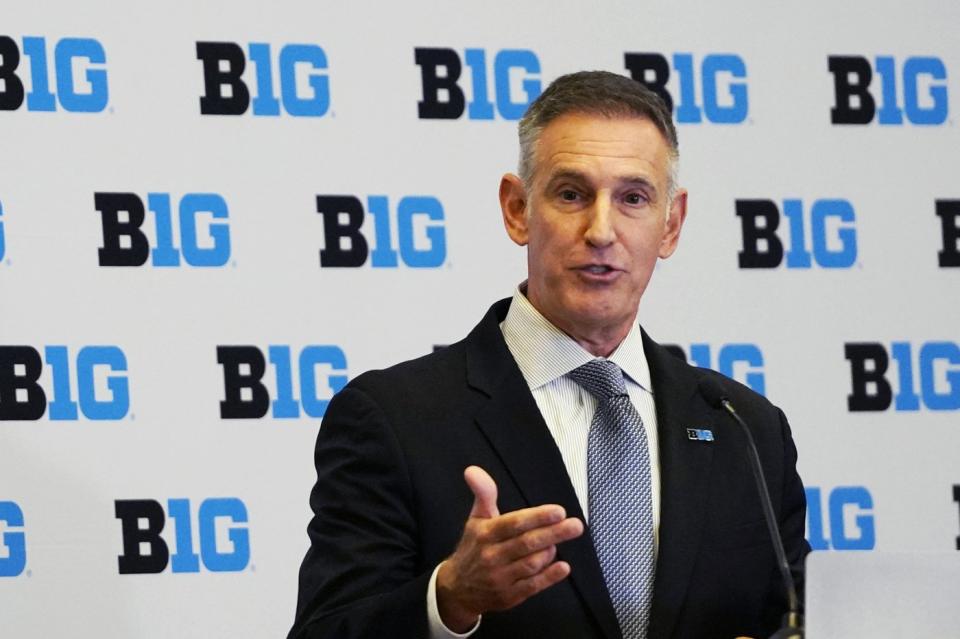Big Ten and SEC are again the top conferences in revenue with athlete pay plan on horizon
The Big Ten held a narrow edge over the Southeastern Conference in revenue for the second straight year and the Atlantic Coast Conference again ranked a distant third among the five largest college sports conferences, according to tax filings released this week.
The five leagues combined to generate $3.55 billion in the 2022-23 fiscal year, with the Big Ten reporting revenue of $879.9 million compared with $852.6 million for the SEC. The ACC saw the most significant increase, going from $617 million in 2021-22 to $707 million.
The Pac-12, which will see 10 of its 12 members disperse to other conferences in 2024-25, generated $603.9 million. The Big 12 was fifth at $510.7 million.
The details were disclosed in the same week all five conferences and the NCAA agreed to pay a total of $2.8 billion to settle antitrust litigation that is expected to also lead to the creation of a first-of-its-kind revenue-sharing system where schools will directly pay their athletes for the first time.
The Big Ten and SEC have emerged as super-conferences after a wave of realignment led to schools leaving one league for another over the past two years. The most dramatic development from that was the demise of the Pac-12, but the earning power of the Big Ten and SEC is also a major development, feeding angst and concerns among the remaining conferences.
SCHOOL PAYOUTS
Twelve of the 14 Big Ten schools each received about $60.5 million from the conference, with 2014 additions Maryland and Rutgers getting about $58.8 million apiece.
The SEC distributed $51 million to each school. Each ACC school received between $43.3 million and $46.9 million; Notre Dame, an independent in football, received $22.1 million.
Big 12 schools received distributions ranging from $43.8 million to $48.2 million. The Pac-12 distributed about $33.6 million to each of its members, down from $36 million the previous year.
COMMISSIONER COMPENSATION
Jim Delany, who stepped down as Big Ten commissioner in 2020, received $3 million in retirement compensation and another $2.8 million in deferred pay. Kevin Warren, Delany's successor who left in April 2023, was paid $3.7 million.
SEC Commissioner Greg Sankey was paid about $3.6 million
The ACC paid Jim Phillips about $2.8 million in his first year as commissioner.
The Pac-12 paid former Commissioner George Kliavkoff $3.98 million. Larry Scott, who preceded Kliavkoff, was paid $2.28 million, including $1.5 million through a separation agreement. The Pac-12 amassed $6.7 million on legal fees, about three times more than any other conference.
Bob Bowlsby, the former Big 12 commissioner, was paid $17.2 million in his final year. That included $12.3 million for the remaining three years on his contract and $2.6 million in deferred compensation. Brent Yormark earned $1.2 million in his first year as Bowlsby's successor,
Four of the Power Five conference's fiscal years ended June 30, 2023; the SEC's ended Aug. 31, 2023.
___
AP college sports: https://apnews.com/hub/college-sports
Eric Olson, The Associated Press

 Yahoo Finance
Yahoo Finance 

